Pearl farming is an exciting and growing business because of the high value and quality of the final product. Hence, it ensures a higher chance of a better return on investment. The final product is lightweight and durable, adding to the benefits of Pearl farming. It translates into lower storage costs. Pearls are widely used in two ways.
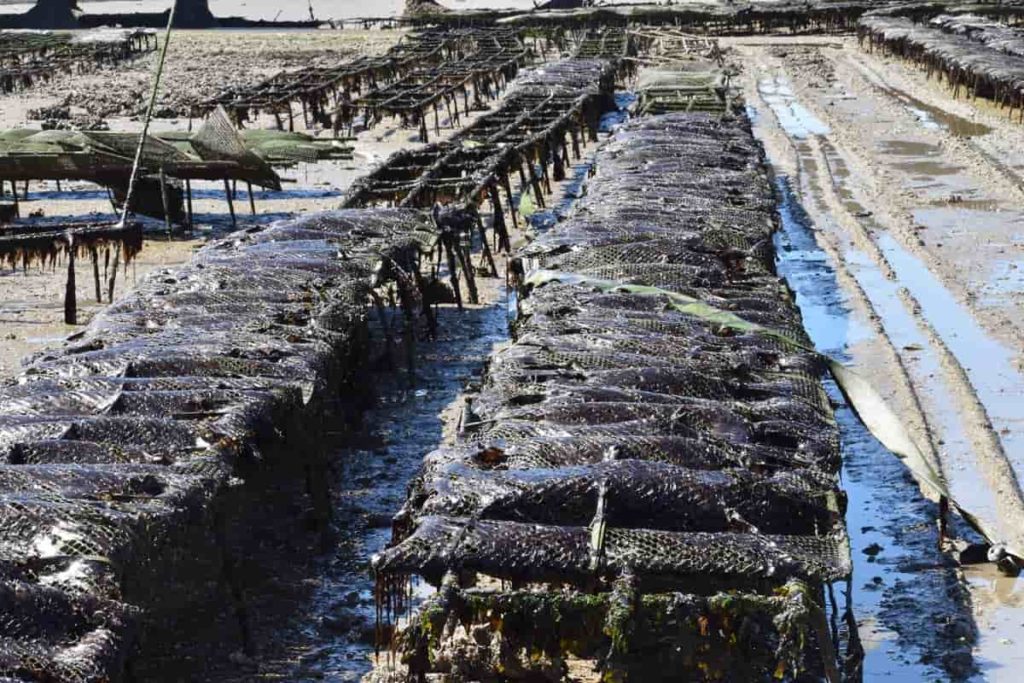
They are used in jewellery making and spiritual practices, in high demand worldwide. People pay more for Pearls based on their quality. Farmers’ income in India usually depends on external factors like climate, which often leads to losses. Still, on the other hand, Pearl farming is completely independent of these factors and will give you huge profits.
How to start Pearl farming from scratch
Is Pearl farming easy?
Pearl farms can become vulnerable to uncontrollable and unpredictable forces, such as severe storms, water pollution, disease, extreme cold or heat, infection, etc. Pearls, but the result is undoubtedly worth it. Pearl farming has many benefits like youth employment and is very profitable. Therefore, it is becoming more and more popular these days. The ideal Pearl is round and smooth, but other shapes, called baroque Pearls, can occur.
Pearl farm construction involves three steps
- Farm site selection
- Farm Construction
- Well-planned work schedule
Farm site selection: This step determines the type of Pearl production and oyster survival rate. Below points to be considered while selecting a site are:
- Natural features like mountains and cliffs are needed to protect the field from winds, currents, storms, etc.
- Constant temperature regularity.
- Type of sea bed like rocky or sandy.
- Light currents are essential for oysters to survive because they bring food and oxygen.
Pearl farm construction: The entire Pearl farm system is based on a series of floating wooden rafts. Ten units of wooden rafts are used on the Pearl farm. Each raft mainly consists of two to five pieces of wood with a total length of up to 20 feet. Then, the raft is covered with wire mesh baskets containing 10 oysters.
Well planned work schedule: A regular work schedule plays a very important role in Pearl culture. The time of collection and spawning of oysters should be fixed and strictly followed.
Why is commercial Pearl farming profitable?
Due to the high value of the final product, Pearl farming is a profitable business. However, the price of the Pearl depends a lot on the size and quality. Furthermore, it is a niche farming business where the end product is light and non-renewable. It is also a suitable profession for those who love to work on water. And also those who are skilled in boating, diving, and fishing.
Apart from the grafting process, Pearl farming is a relatively simple form of aquaculture. Because this business doesn’t demand artificial feeds, complex farm structures, or constant attention, however, to succeed in business, you must manage the farm properly.
How can I start Pearl farming at home?
Starting at home, you’ll need a simple setup of at least two fish tanks to get started. The tanks have to be placed on top of each other so that the water from the upper tank flows into the lower tank. Next, you will need to drill a hole in the top tank. The method you can grow Pearls at home in buckets or small tanks is called Recirculating Aquaculture System. This system works by filtering the water from the fish tanks so that it can be reused within the tank.
In case you missed it: Earning Up to 4 Lakhs from Pearl Farming: A Success Story of a Pearl Farmer in India
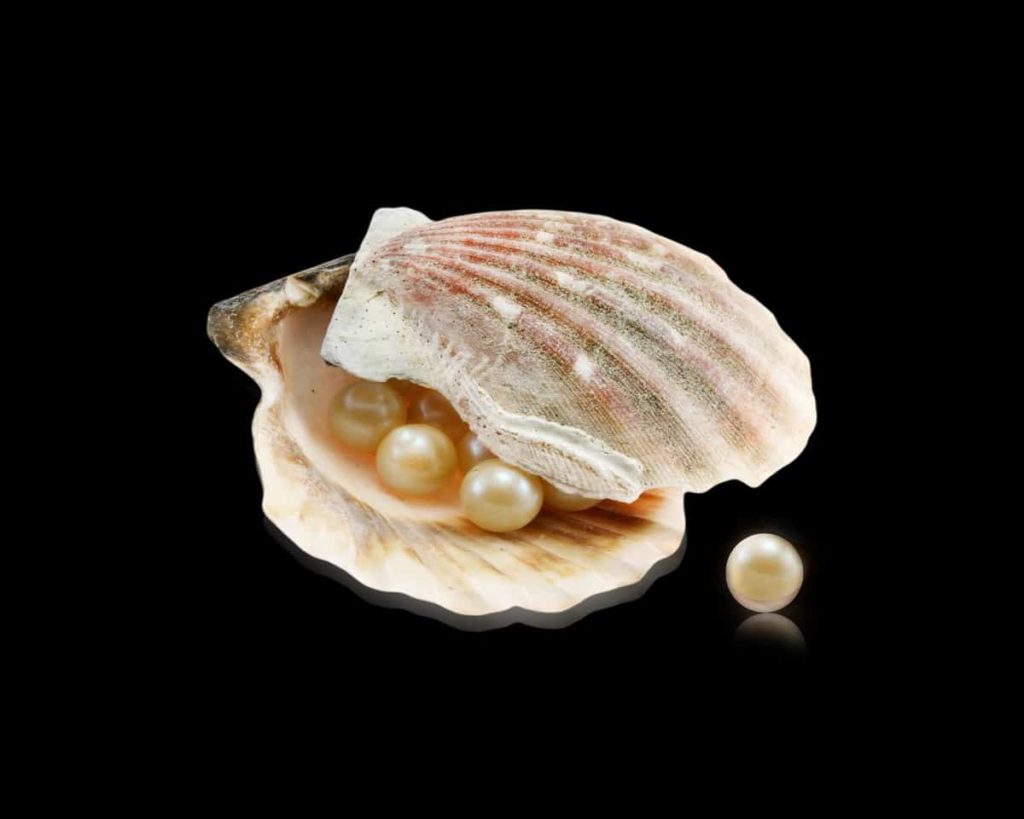
This system works by filtering water from fish tanks so that it can be reused within the tank. In the first step toward starting Pearl farming, you need to test the water to understand if it is suitable for Pearl farming. Anyone can get the water tested at a government laboratory. It will help you determine if they will survive in that water.
Once this is done, professional training should be taken at any institute offering Pearl farming training courses. CIFA is the most prominent among them. It will help you learn the right technique for cutting Pearls. The favorable season for Pearl cultivation is from October to December. The farmer must buy oysters from local ponds or other water bodies.
On average, a mussel can hold 2 to 8 Pearls if it is small. And if the mussel is large, up to 28 Pearls. After receiving the mussel, they are kept in the critical care unit for 4 to 6 days, and once their health is ascertained, they are transferred to the fish tank after a minor operation can add any Pearls. Then, these oysters are kept in nylon bags for 10 days on antibiotics and natural food.
What are the requirements for Pearl farming?
- Beds can be cultivated in ponds at least 10 x 10 feet or larger.
- The favorable season for Pearl farming is from October to December.
- The farmer collects oysters from ponds, rivers, etc., or they can be bought. Then, after a minor operation in each Oyster, plain or designed Pearls of four to six mm diameter like Ganesha, Buddha, flower motifs, etc., are inserted into it. The Oyster is closed and kept in nylon bags for 10 days on antibiotics and natural food. They are inspected daily, and dead oysters are removed.
Why Pearl farming is important?
Due to the high demand for gems, Pearl farming is gaining importance worldwide. It has great importance for economic development and coastal areas. A pear is described as a hard spherical gem that is bluish gray or plain white. It is formed inside a bivalve mollusk or Pearl oyster.
Things to consider in starting a Pearl farming business;
- Successful Pearl farming needs a long-term investment of time, money, and effort. It needs at least 2 to 3 years for the first harvest. Additionally, you will usually be able to make a profit from the second or third crop. So you should have enough money, time, and patience to maintain the farm.
- Secondly, producing high-quality Pearls is the key to a profitable farm. And you will only get 5-10% of high-quality Pearls from each harvest. Therefore, these high-quality Pearls capture 90% of the farm’s profits. And it would help if you produced high-quality Pearls with proper care and maintenance.
- Finally, it is important to have a reliable source of Pearl oysters. You have to choose a suitable site. In addition, you must arrange sufficient funds to get the farm up and running. You will need to seek technical assistance from grafting technicians. Arrange for that too.
- Finally, check if you can market Pearls before starting the farm and whether you meet the above criteria.
Can you grow Pearls in a fish tank?
- Various methods can be used for this farming, from growing Pearls in ponds to cement tubs or fish tanks.
- The method used for Pearl farming is called the Recirculating Aquaculture System (RAS).
Is Pearl a good business?
- Pearl farming is the best aquaculture business in India, as Pearls have excellent market demand. Pearls are in high demand in the local and export markets.
- Growing Pearl oysters is similar to growing any crop. It would help if you took care of the farm often for Pearl oysters to grow well and produce high-quality Pearls.
- Regularly check for any damage, missing lines, and floats. It would help if you cleaned the Pearl oysters of the nasty organisms that grow on their shells. Always handle Pearl oysters gently during cleaning.
In case you missed it: Best Fertilizer for Bajra/Pearl Millet: Organic, NPK, Compost, When and How to Apply
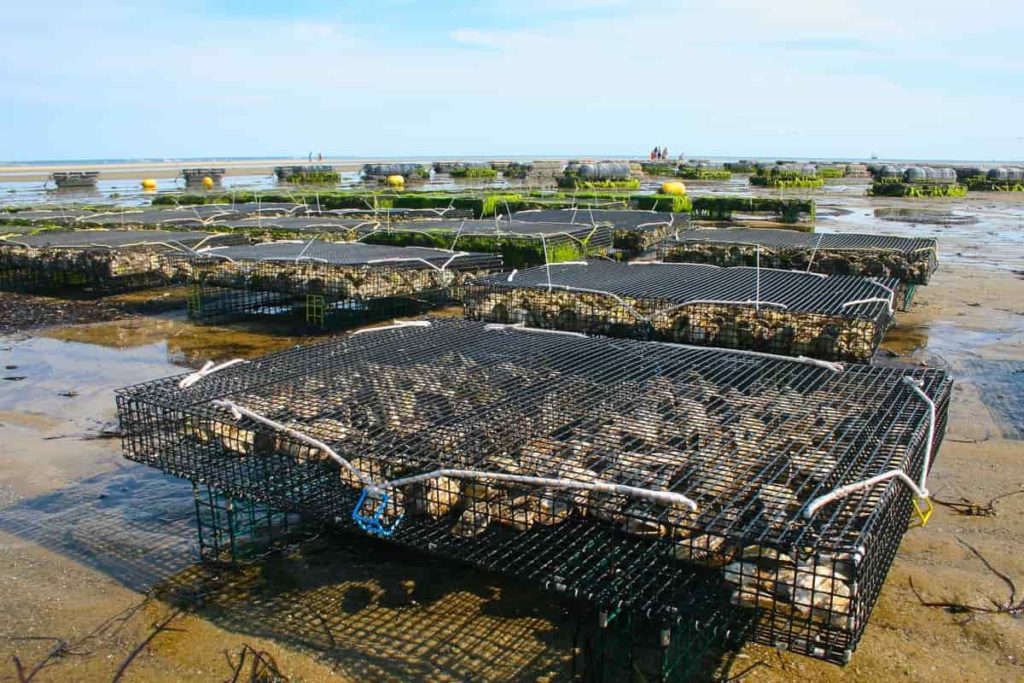
How much investment is needed in Pearl farming?
- While you may think gold and silver are the obvious choices when buying investment jewelry, Pearls are a great alternative.
- The first-year investment in a commercial Pearl farming project will be high as you need a fixed asset setup.
- You can estimate from 3/4 to 1 acre, and the Pearl project will cost around Rs.4 lakhs.
Major costs involved in the Pearl farming business
- The cost of obtaining oysters from the market through one of three methods: Spat collection, spat purchase from a hatchery, or collection of mature oysters.
- Determine the cost of farm structures (floats, lines, rafts, etc.)
- Purchase of boats
- Various equipment and supplies
- Labor cost
- Licensing cost (If you want to start a commercial business, you must meet this requirement)
- Grafting technician cost
- Transportation cost
- Technical consultant fee
- Marketing cost
How to start Pearl farming?
Farmers use different methods of Pearl cultivation in different regions of India and countries like China, Japan, etc.
- Tahiti Longline Method – In this method, a mainline is held in place by anchors and kept afloat by buoys. Oysters are hung on the main line. In simple terms, a rope is tied to some anchor lines, and to keep it fast; the main rope is tied to some empty vessels. This underwater farm method is mostly preferred, protecting the Pearls from bad weather and boats. It is mostly used in the Pacific Ocean. It carries two people underwater and one on the boat. The main line used should be polypropylene or nylon material. It is important to ensure that the knot to tie the main line to the anchoring point is strong.
- Floating rafts method – This method uses floating rafts to suspend the Pearl oysters. These rafts are usually made of bamboo. Now, these rafts float on the water with some empty drums or containers attached to them. The advantage of this method is that it provides stability. It is commonly used in Japan and Indonesia.
- Recirculating Aquaculture System – This is how you can start Pearl farming at home. As the name suggests, this process involves circulating water within tanks and filtering solid waste, carbon dioxide, and ammonium from the water. After that, the filtered water, saturated with oxygen, is reused.
How profitable is Pearl farming?
- It usually takes 20 to 24 months to give you results, but if cultivated properly, it usually gives you an income of 10-12 lakhs and a profit of around 8 lakhs.
- Pearl farming gives you huge profits while you only need your skill and will to give such good results.
- It usually requires very little labor because you only have to feed the oysters, hang them, and insert the pebble-sized mantle grafts and nuclei into them. The labor required is less, but it requires some really good skills.
- You can get training and learn these skills in various Pearl farming training centers and also learn these skills through free training provided by the government.
How many Pearls can one Oyster make?
Some oysters may produce two to three Pearls during their lifetime, but with good quality Pearls, only one Oyster will repeat the Pearling process.
In case you missed it: Ways Pearl Farming Make You Rich in a Short Time, Subsidies from Government of India
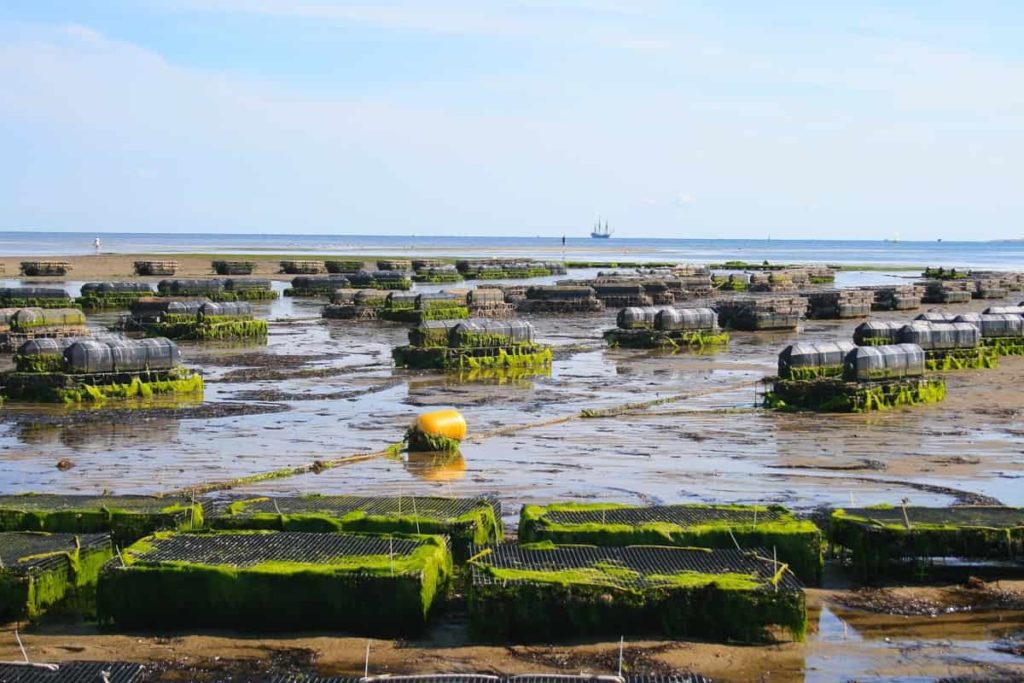
Is Pearl farming sustainable?
- There is a unique synergy between Pearl quality and marine health; profitability and conservation are intertwined.
- Pearl farming provides economic development opportunities to remote communities.
- Potential for a sustainable luxury product and a great way to engage and educate consumers.
- Oysters are a renewable resource.
What are saltwater Pearls?
- Generally, Pearls from saltwater environments are rounder and shinier than their freshwater counterparts.
- In addition, the saltwater Pearl industry is very small, and production costs are significantly more expensive, making these Pearls more valuable and valuable.
Different types of saltwater Pearls
Akoya: Akoya Pearls are saltwater cultured Pearls found in the salt waters of Japan and grown in the pinctada fucata or Akoya Pearl oyster.
Tahitian: Tahitian Pearls are the world’s only naturally occurring black Pearls. These Pearls are made by the black-lipped pinctada margaritifera oyster found in the waters of French Polynesia. They are considered the second most valuable Pearl in the world, usually prized for their exotic colors and exceptional luster due to their unique thickness.
White and Golden South Sea: Considered to be the rarest and most valuable Pearls in the world, these Pearls range from pure white to deep golden and are the thickest of all cultured Pearls. These Pearls take almost twice as long to cultivate as Akoya Pearls, and the unique types of Pearls that produce these Pearls are delicate and sensitive.
How can I start my own Pearl business?
For Pearl farming, Pearls can be produced from as many as 25,000 oysters in a small pond such as 0.4 hectares. To start farming, the farmer has to collect oysters from ponds, rivers, etc., or they can be bought.
Right Oyster Preparation – The process of collecting Pearls from water and creating Pearls is called freshwater Pearling. Once the mussels of choice are chosen, they are soaked continuously in a water basin for a few days. Then, the oysters are placed in a shallow tub. The Pearl cultivator only holds enough water in the tub so it doesn’t cover the mussels and prevent them from breathing. Next, a piece of tissue from the mantle is used to graft a freshwater mussel.
It is done without putting beads inside the Oyster. Instead, unlike the gonad, the mantle tissue is inserted into the mantle of the host mussel. Grafts can be received from both sides. The average freshwater Oyster can produce about 32 Pearls during a single culturing cycle. After the graft is complete, needles are used to bend and shape the donor tissue carefully. The goal is to round the edges, creating a smooth bag of Pearls that is comfortable and nurturing.
What is Pearl farming called?
The operation that involves moving the Oyster or mussel to produce the nacre secretion and cultured Pearl growth is called grafting. It is also called nucleation or seeding. Freshwater Pearls are harvested in the spring and fall seasons. It occurs when the weather, other external environments, and water temperatures are calm. These Pearls need a stable, peaceful, calm environment to thrive. A stable environment helps ensure the Pearls receive adequate water and nutrients, as they release the impurities needed to form the gemstones.
Important things to remember;
- Long-term capital Work, hard work, patience, and money – this business process is easy to learn. However, the main reason for the failure of newly established farms is the reluctance to invest the time and money required to produce high-quality Pearls. It takes one to two years before the first harvest, and most farmers don’t start making a profit until their third or fourth harvest. So, to start this business, you must have enough money, time, and patience.
- High-quality Pearls are the key to profitability – Average-quality Pearls only sell at prices high enough to recover production costs, and selling low-quality Pearls is a loss. But high-quality Pearls can be sold at higher prices and return a profit. But to produce high-quality Pearls, farmers must take great care at all stages, from purchasing oysters to harvesting.
In case you missed it: Bajra Cultivation Income (Pearl Millet), Yield, Profit Guide
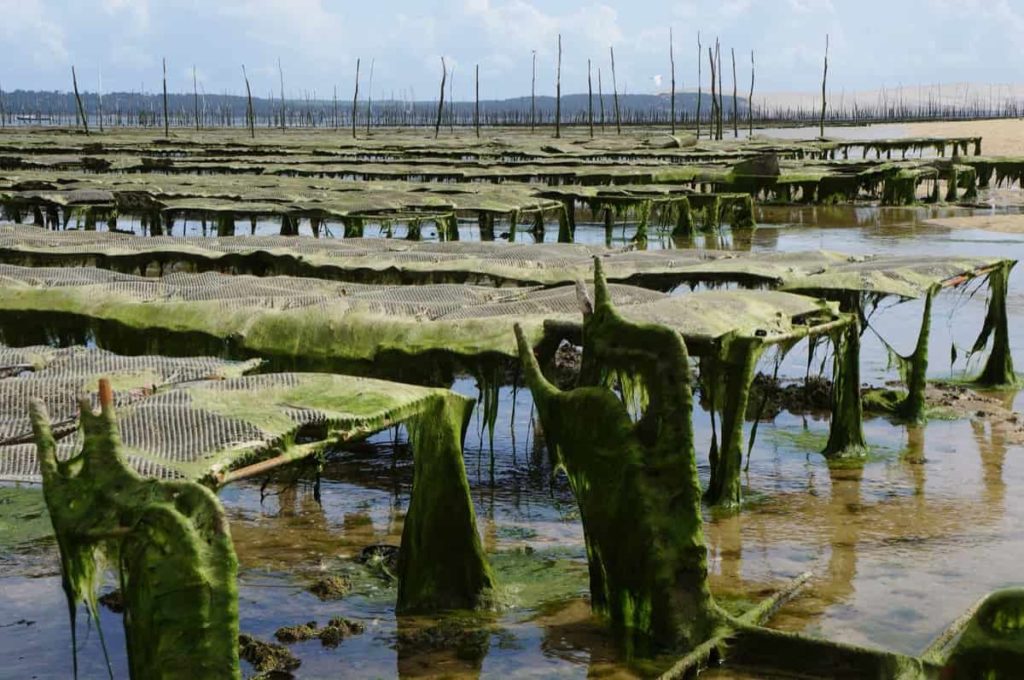
How many varieties of Pearls are there?
Cultured Pearls come in 5 main types: Akoya, Tahitian, freshwater, white and golden South Sea, and Sea of Cortez. Each type of Pearl has a unique beauty to offer today’s Pearl lovers.
How long does it take to grow Pearls?
Producing Pearls can take anywhere from 6 months to several years. Even earlier, the mollusk takes about 3 years to mature to produce Pearls. The mollusk can only reach this maturity naturally or with the help of humans.
License required to set up Pearl farming business:
- Certificate from Central Institute of Freshwater Aquaculture (CIFA)
- Permission from Fisherman’s Cooperative Society
- PAN and Aadhaar card details
- GST registration
- Land and lease agreement
Is freshwater Pearl farming profitable?
- Freshwater Pearl farming is the method of growing cultured freshwater Pearls on a farm. Within 2-5 years, a Pearl farmer raises and cares for several thousand oysters to grow and produce Pearls. Pulling it off requires both skill and luck.
- Pearl farms can become vulnerable to uncontrollable and unpredictable forces, such as severe storms, water pollution, disease, extreme cold or heat, infection, etc. Before you can start Pearl farming, you must obtain oysters to nucleate. Back in the day, that meant fishing for oysters in the ocean.
- Pearl growers find it easier and more productive to breed their own. Farmers must collect eggs and high-quality sperm oysters from the oysters already on the farm.
- Pearl farming requires minimum labor and is highly profitable as an additional source of livelihood as it can be done even in a 10×10 feet pond. Once you dig a pond, you can either use shells (oysters) from the local reservoir or buy them from a supplier at a modest price of Rs 5 per piece.
- Freshwater Pearls are Pearls that Pearls are grown on farms using freshwater mussels. Because mussels are organic hosts, Pearls can be up to 10 times larger than Pearls made by natural, saltwater oysters. And shiny freshwater oysters. Pearl production is astounding. Because mussels have no shell-bed nucleus, cultured freshwater Pearls are pure. Each can produce more than one Pearl with each production cycle.
- The entire cultivation process requires much less advanced surgical skills than sea Pearls for complete cultivation. It makes these Pearls easier to cultivate and less expensive than others, which adds value to their freshwater Pearls. Freshwater Pearl surface, freshwater Pearl shape, luster, and matching the quality of these Pearls are evaluated using a Pearl grading system based on freshwater pearls’ color. Freshwater Pearl culture produces pure Pearls.
How many Pearls can be in an oyster?
A Pearl grows around the nucleus and begins to collect the nacre. This nacre layering is the Pearl beauty. Saltwater oysters will produce only 1 to 2 Pearls per normal nucleation. Akoya oysters can be nucleated with up to about 5 beads, but it is more common to use only 2.
How is a Pearl harvested?
When it is time to remove the Pearl, it is sent to the harvester. They carefully open the Oyster and remove the Pearl, often using a surgical instrument. Removing the Pearl does not harm the Oyster; they can then insert a new nucleus and grow another Pearl inside the same Oyster. Pearl farmers must patiently wait for the Pearls to grow inside the oyster shell. When the Pearl is ready in the Oyster, the harvester opens the shell, removes the Pearl, and examines it for quality.
In case you missed it: Frequently Asked Questions About Pearl Farming
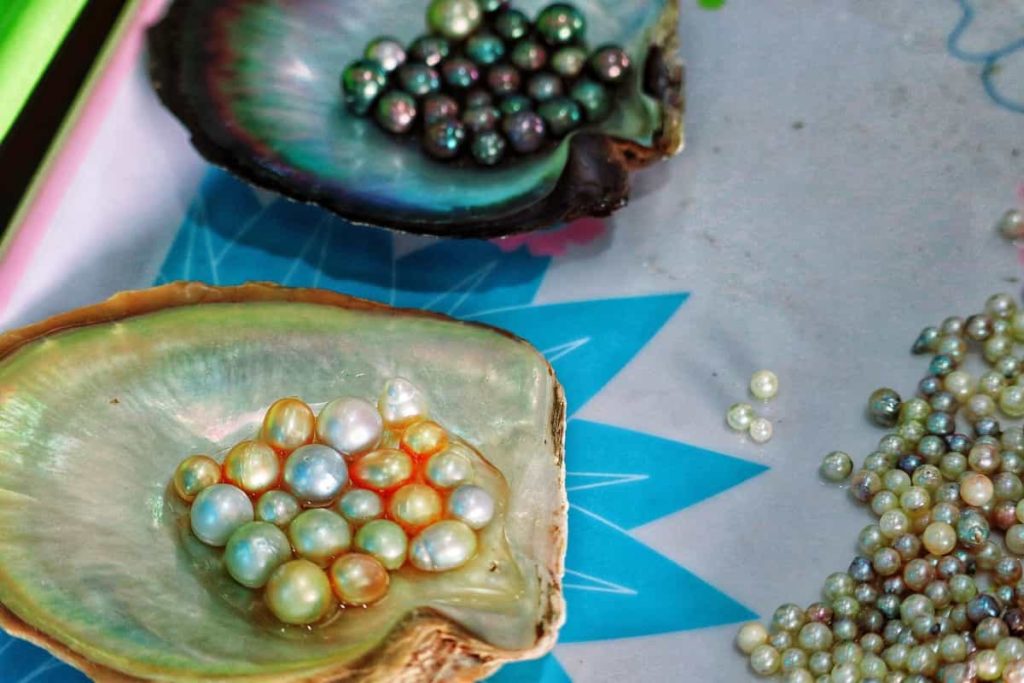
Some oysters may produce two to three Pearls during their lifetime, but with good quality Pearls, only one Oyster will repeat the Pearling process. Harvest the Pearls when the nacre layer is 0.08-0.12 inches (2-3 mm) thick. Don’t risk creating a Pearl with a thin nacre by trying to cut the skin. After harvesting, you should store the Pearls in a safe place. Wash the Pearls after harvesting. Finally, always record your Pearl farming business grafting and harvesting.
Conclusion
Commercial Pearl farming is a profitable business. However, you will need good technical knowledge. Moreover, the business demands a relatively high initial investment. The cultured Pearl industry is changing rapidly. Demand for cultured Pearls is increasing. However, the main driving factors are new technologies and greater access to technologies for Pearl farming. These “cultured Pearls” are usually larger and more consistent in size and color than natural Pearls. You only need an initial investment of fixed assets and proper skills to get good results.
- Types of Pesticides Used in Agriculture: A Beginner’s Guide
- Economical Aquaculture: A Guide to Low-Budget Fish Farming
- 15 Common Planting Errors That Can Doom Your Fruit Trees
- How to Make Houseplants Bushy: Effective Tips and Ideas
- Innovative Strategies for Boosting Coconut Pollination and Yield
- Pollination Strategies for Maximum Pumpkin Yield
- The Complete Guide to Chicken Fattening: Strategies for Maximum Growth
- Natural Solutions for Tulip Problems: 100% Effective Remedies for Leaf and Bulb-Related Issues
- Revolutionizing Citrus Preservation: Towards a Healthier, Greener Future
- Natural Solutions for Peony Leaf and Flower Problems: 100% Effective Remedies
- Maximizing Profits with Avocado Contract Farming in India: A Comprehensive Guide
- Natural Solutions for Hydrangea Problems: 100% Effective Remedies for Leaf and Flowers
- The Ultimate Guide to Choosing the Perfect Foliage Friend: Bringing Life Indoors
- From Sunlight to Sustainability: 15 Ways to Use Solar Technology in Agriculture
- The Ultimate Guide to Dong Tao Chicken: Exploring from History to Raising
- The Eco-Friendly Makeover: How to Convert Your Unused Swimming Pool into a Fish Pond
- Mastering the Art of Delaware Chicken Farming: Essentials for Healthy Backyard Flocks
- 20 Best Homemade Fertilizers for Money Plant: DIY Recipes and Application Methods
- How to Craft a Comprehensive Free-Range Chicken Farming Business Plan
- Brighten Your Flock: Raising Easter Egger Chickens for Beauty and Bounty
- How to Optimize Your Poultry Egg Farm Business Plan with These Strategies
- Subsidy for Spirulina Cultivation: How Indian Government Schemes Encouraging Spirulina Farmers
- Ultimate Guide to Raising Dominique Chickens: Breeding, Feeding, Egg-Production, and Care
- Mastering the Art of Raising Jersey Giant Chickens: Care, Feeding, and More
- Ultimate Guide to Raising Legbar Chickens: Breeding, Farming Practices, Diet, Egg-Production
- How to Raise Welsummer Chickens: A Comprehensive Guide for Beginners
- How to Protect Indoor Plants in Winter: A Comprehensive Guide
- Ultimate Guide to Grow Bag Gardening: Tips, Tricks, and Planting Ideas for Urban Gardeners
- Guide to Lotus Cultivation: How to Propagate, Plant, Grow, Care, Cost, and Profit
- Agriculture Drone Subsidy Scheme: Government Kisan Subsidy, License, and How to Apply Online
- Ultimate Guide to Raising Araucana Chickens: Breed Profile, Farming Economics, Diet, and Care
- Bringing Hydroponics to Classroom: Importance, Benefits of Learning for School Students
- Ultimate Guide to Raising Polish Chickens: Breed Profile, Farming Economics, Diet, and Care
- Ultimate Guide to Raising Australorp Chickens: Profile, Farming Economics, Egg Production, Diet, and Care
- Silkie Chicken Farming: Raising Practices, Varieties, Egg Production, Diet, and Care
- Sussex Chicken Farming: Raising Practices, Varieties, Egg Production, Diet and Care
Very interested to know more about Pearls cultivation. Please let me know were can I get these Oysters or available.
I’m very much interested in doing .
Thank you so much.
Interesting to know about this pearl farming & will like to explore it further, to know about it & if possible venture into it.
Thanks for the information